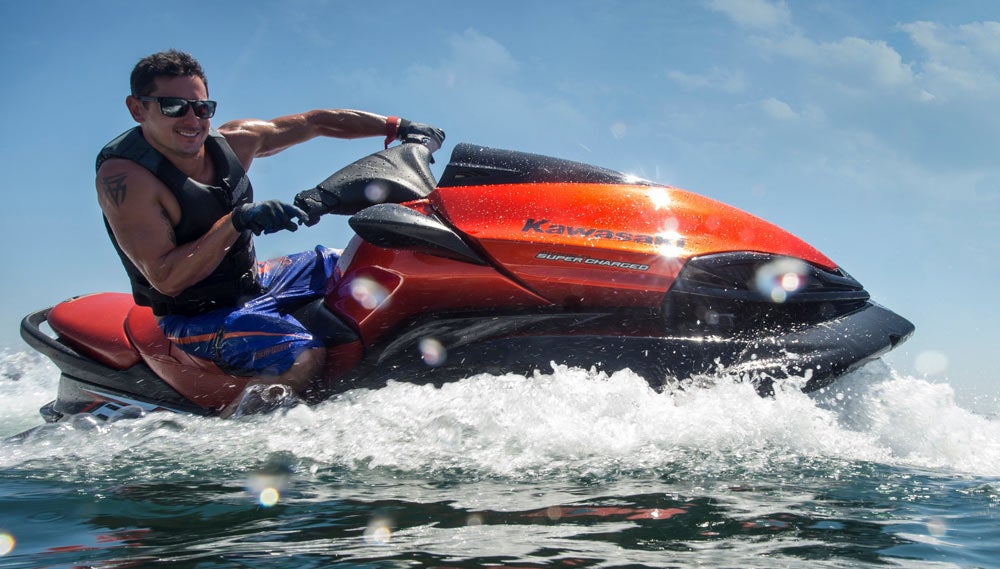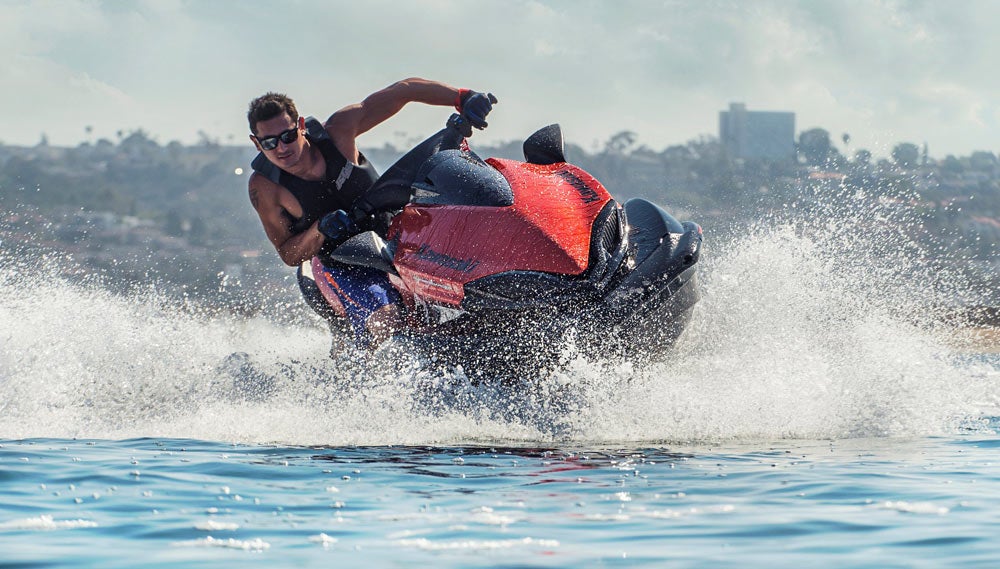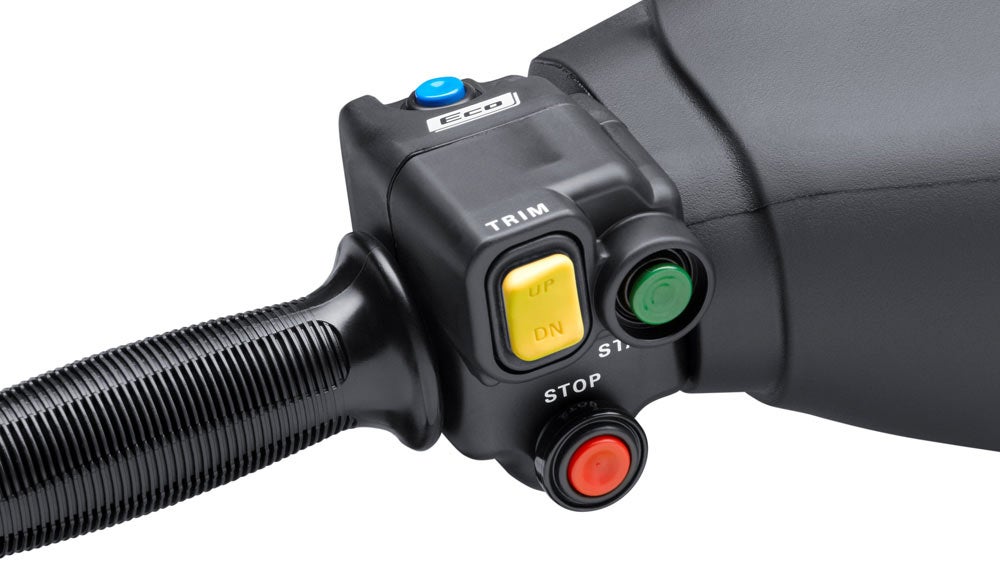2017 Kawasaki Jet Ski Ultra 310X SE Review
Bolstered seat and unique paint job set this Ultra apart
The 2017 Kawasaki Jet Ski Ultra 310X SE sits one notch up the ladder on the Ultra 310 hierarchy, one step ahead of the 310X. The difference, aside from a $500 increase in price? The in-your-face obvious is color. The SE’s Ebony’s and Sunbeam Red stand out both in the showroom and on the water.
Engine: Four-cylinder 1,498cc
Fuel Capacity: 20.6 gal.
Stowage Capacity: 56 gal.
Seating Capacity: 3
MSRP: Starting at $15,799
There’s also a saddle upgrade. Unlike the 310X, the 310X SE receives a notable bolster for the driver’s lower back, a perch that locks you in position when aggressively riding and provides welcome lower-back support when long-distance touring. The cut-and-sew construction is also more refined, giving the saddle a tailored look, not to mention better comfort. A bonus is that it also slims forward, not forcing a rider’s legs as wide but instead letting them grasp the seat and take more of the force in tight turns.
As to the rest of the craft, it’s trademark Ultra; a craft that mixes sheer power with standout rough-water handling ability.
Familiar Tale
Ultras have always been renowned for their brute strength, and at 310 horses, the current engine ranks as the highest horsepower production engine on the market. Displacement measures in at 1,498cc, split between four cylinders. Boosting the power is an Eaton Twin Vortices supercharger, paired with a large intercooler. The combo produces a punchy 1,890 pounds of thrust. That power comes on with a brutal feel, spooling up without low-end hesitation and pushing the boat to an average 67 mph top speed. Yes, you may go somewhat slower or faster depending on load and conditions, but suffice it to say you’ll run with the best flagships on the market, and enjoy a pretty bulletproof engine that has established a track record of reliability.
The hull is equally impressive. Kawasaki was one of the first on the scene with a big, deep deadrise (22.5 degrees) hull, and even now the Ultra remains one of the best. It excels in the ocean, making its way across the waves with a precision ride that almost never surprises the rider. If your skill level is up to the task, pin the throttle, get out of the saddle and bend those knees to absorb the bumps, and you can practically tear across the ocean without worry. The platform has won countless offshore race titles.
That focus used to mean the Ultra could feel a little big in calmer conditions, but electric trim and a steering nozzle change years back changed the boat’s personality. Drop that trim entering into a sharp turn, crank those handlebars, and the craft responds with a slalom turn that defies its sizable girth. One small catch is that you have to avert your eyes to check the trim position. Once you get used to where you like it, however, you can accomplish much of the change by feel.
Extras…But Not Extravagant
Ultras offer the necessary extras without going overboard. Cruise control and a no-wake mode, grouped adjacent to the throttle, are both included, easing those long runs across open water, making for a more steady watersports tow platform, and taking the monotony out of no-wake zones. Opposite, an ECO setting is located in the same lefthand cluster that groups trim and start/stop. Activate it to save fuel, but still get much of the sporty response you expect from the Ultra.
Other features include a glovebox-located key to prevent theft (as well as activate a speed-governed mode), five-position tilt steering, impressive capacities (56 gallons for storage, 20 for fuel), and a spring-loaded boarding step tucked below the lip of the aft deck.
Missing? In the current world of Sea-Doo’s iBR and Yamaha’s RiDE, any type of electronic reverse or braking/deceleration capability. Kawasaki’s manual reverse is effective, but definitely more cumbersome to use, although only a few short years ago we didn’t even know what we were missing. Its portside location allows simultaneous use of the throttle, but it can’t (or shouldn’t) be used as any sort of deceleration alternative.
Decision Time
Obviously, with the same horsepower and hull, deciding between Ultra 310 models can be tricky. Color will come into consideration; some love red, others not so much. In practical terms, however, the saddle makes the biggest difference. If you like to aggressively ride and move your weight around in the saddle, the base 310X offers a simpler, cleaner slope. But if you long for some back support, or prefer to feel a little more locked in place, the SE’s bolster and contours will be welcomed.
Either way, you’ll still have an Ultra…one of the most “ultimate” craft on the market.
Get PersonalWatercraft.com in your Inbox!
Like PersonalWatercraft.com on Facebook
Comments
Most Popular

2025 Yamaha JetBlaster PRO 2-Up Review

Remembering the Sea-Doo XP

2024 Kawasaki Jet Ski STX 160X Review

2017 Kawasaki Jet Ski Ultra 310LX Review

Whatever Happened to the Wetbike?



















 Your Privacy Choices
Your Privacy Choices